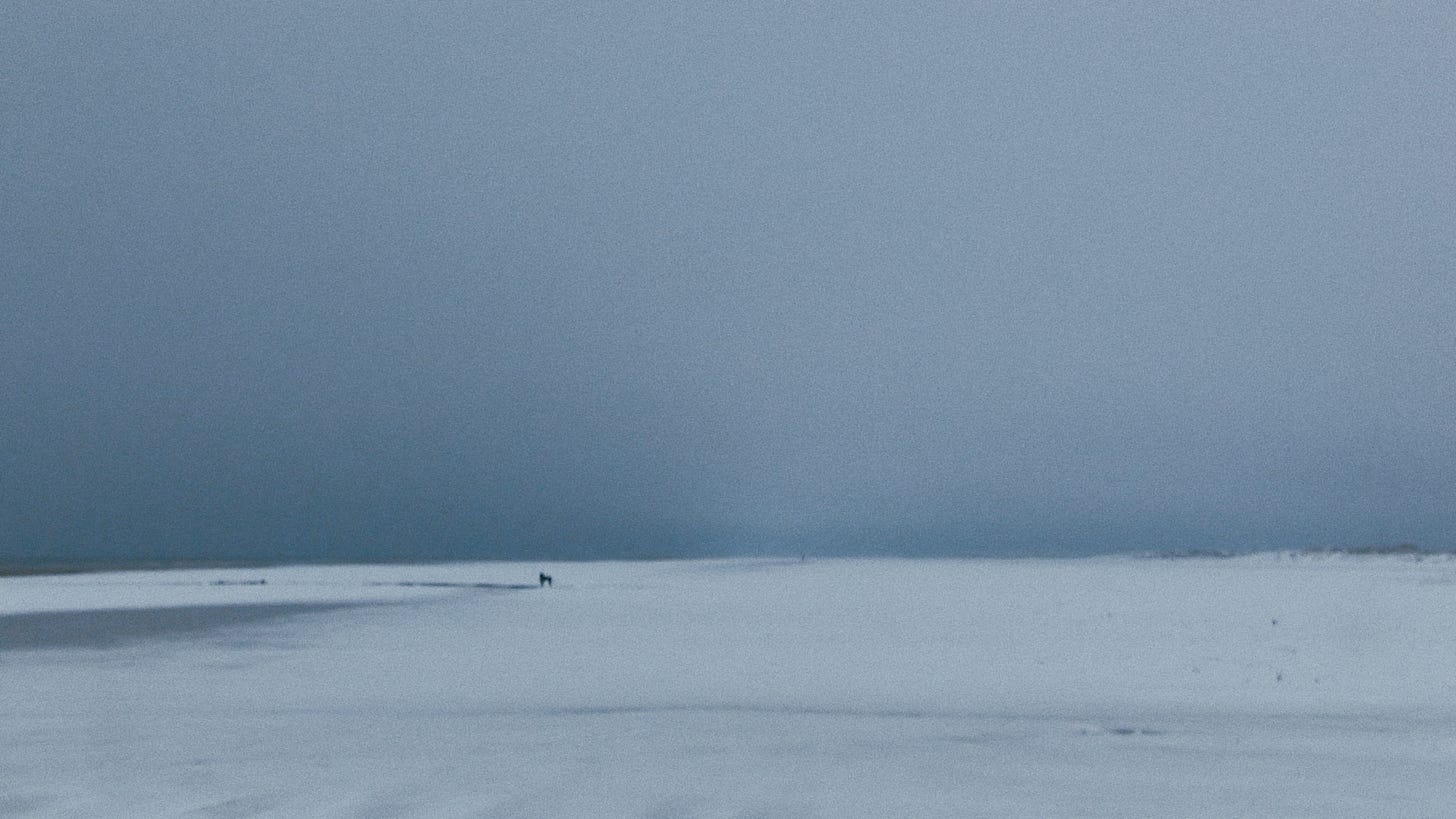All These Summers
Blaise Radley on Therese Henningsen’s dismantled documentary.
Welcome back to VOLUME 21: The Creative Nonfiction Film Weekend 2025. For our final essay in the sequence, Cinema Year Zero reviews editor Blaise Radley hails All These Summers, Therese Henningsen’s tactile self-portrait film.
We will close out the issue next week with a history of the personal documentary in 10 films. Until then, you can read the entire issue here.
All These Summers opens on a city scene recognisable to anyone who’s been out late in London on the weekend (especially in the post-pandemic era)—a surprisingly high number of cars and a dispiritingly low number of people, the swallowing quiet only occasionally interjected upon by the mew of a tabby cat or the bristling movements of a city fox. Guiding us through this early morning metropolitan safari is Povl Christian Henningsen, a well-humoured ageing Danish man who offers musings on the rather tepid nightlife of Seven Sisters as he attempts to engage passersby in dialogue. Lurking by a bus stop, he has the air of a lion lying in wait near a watering hole, but getting more than a polite “Morning!” is nigh impossible.
It’s 5 minutes in before we establish the father/daughter dynamic between the filmmaker, Therese Henningsen, who occasionally chimes in from behind the handheld camera, and Povl. Indeed, what first appears to be an investigation of the nocturnal urban, where lone figures become mysteries to unravel and the sound of the city takes on an ambient texture (off screen, Therese explained that the project’s inception was her own insomnia, and a resultant desire to film encounters with people who were likewise awake at 4am), morphs into something more inward-facing and emotionally dense.
This personal inquiry develops in stops and starts once we meet Therese’s second subject: her Greek Cypriot neighbour Pete. A similar age to Povl, Pete has a kindred affinity with the twilight hours—though as he walks his dog around the city’s green spaces, he makes no attempt to drum up conversation with his fellow twilight hour park goers, viewing them instead with a slight apprehension. Pete’s tendency to create distance between himself and others is what paradoxically draws Therese toward him, finding a parallel between his curious solemnity and the previous depressive periods that Povl speaks of, periods that Therese clearly still carries the weight of from her childhood and adolescence.
As we get closer to both Povl and Pete—the former, as he undergoes treatment for cancer, the latter, as his affection for Therese blossoms—it’s Therese that emerges as the film’s most enigmatic character, revealed mostly through her choice of framing. For much of the runtime the camera positioning acts as a direct substitute for the director’s point-of-view; shot from eye level, bobbing in time with each step, an occasional hand appearing from one corner or the other to push a door open or brush past a wall. Only the shadows reveal the mechanical apparatus between Therese and the image on screen. Pair this with Therese’s decision to do away with straightforward documentary narrativising, cutting between the two storylines with limited exposition, and you’re left with a series of sensory impressions that gradually sketch out the shape of a human being.
The intimacy of the handheld camerawork makes the moments that aren’t shot from this perspective all the more startling. Indeed, it’s the wider static two shots in which Therese enters the frame, leaving the camera on a random nearby surface, that are often the most agonising and invasive; the camera’s presence made clearer by its being stationary, drawing further attention to Therese’s decision to document such private moments. Speaking to her father about her urge to mediate their time together through the camera, he claims it’s an honour to be filmed—but is he withholding something? And is Pete too? In the scant few moments that Therese, back behind the lens, feels the urge to look away from her subject, her camera drifting to one side in the process, the answers become ever more unclear—even as the parallels only become sharper.



